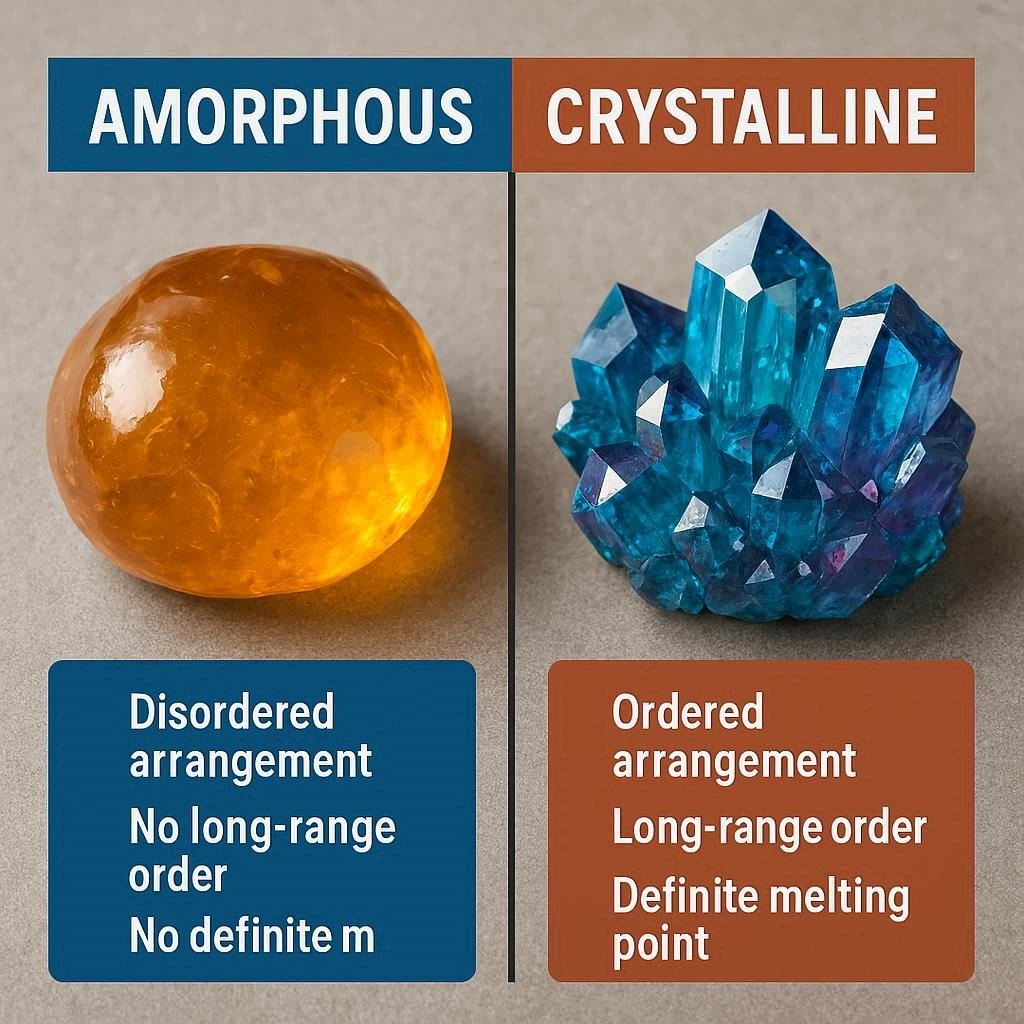Both amorphous and crystalline drugs play distinct and important roles in pharmaceutical formulation, particularly in terms of stability, bioavailability, solubility, and dissolution. Crystalline drugs possess a well-ordered, stable molecular structure that results in slower dissolution and lower solubility, whereas amorphous drugs, lacking a defined lattice arrangement, exhibit higher solubility and faster dissolution rates but are […]
Both amorphous and crystalline drugs play distinct and important roles in pharmaceutical formulation, particularly in terms of stability, bioavailability, solubility, and dissolution. Crystalline drugs possess a well-ordered, stable molecular structure that results in slower dissolution and lower solubility, whereas amorphous drugs, lacking a defined lattice arrangement, exhibit higher solubility and faster dissolution rates but are thermodynamically less stable. Amorphous forms are often utilised to enhance the bioavailability of poorly water-soluble drugs; however, because they tend to revert to the more stable crystalline state over time, stabilisation of the amorphous form is essential for maintaining product performance and shelf life.

| Property | Crystalline Drugs | Amorphous Drugs |
|---|---|---|
| Arrangement of molecules | Molecules are arranged in a definite, repeating, and ordered pattern (lattice structure). | Molecules are randomly arranged without a long-range order. |
| Shape and appearance | Have a definite geometric shape (e.g., cubic, tetragonal, etc.). | Have irregular shape and no fixed geometry. |
| Melting point | Sharp and well-defined melting point. | Do not have a sharp melting point; they soften over a range of temperatures. |
| Stability | Thermodynamically more stable. | Have an irregular shape and no fixed geometry. |
| Solubility and dissolution rate | Thermodynamically less stable (tend to crystallise over time). | Higher solubility and faster dissolution rate. |
| Physical properties | Hard, brittle, and show cleavage planes. | Softer and less brittle. |
| X-ray diffraction pattern | Shows sharp and well-defined peaks. | Shows broad diffuse halos (no sharp peaks). |
Related:
Polymer Morphology and Crystallinity In Pharmaceuticals: Get Mastery With FAQs
Amorphous solubility refers to the maximum concentration of a drug that can dissolve in a solvent when the drug is in its amorphous (non-crystalline) form.
Because the amorphous form has higher internal energy and lacks a crystal lattice, it usually has greater apparent solubility compared to the crystalline form.
However, this solubility may be metastable, meaning the amorphous drug may eventually crystallise in solution, reducing solubility over time.
In contrast, amorphous drugs are in a high-energy, disordered state and tend to revert to the crystalline form over time, especially under stress conditions (temperature, humidity).
In pharmacy, the term amorphous refers to a non-crystalline form of a solid drug or excipient where the molecules lack a definite arrangement or lattice.
Importance in pharmacy:
In tablet formulation, amorphous solids may provide faster dissolution and higher absorption, but need stabilisers (like PVP or HPMC) to prevent crystallisation.
| Feature | Crystalline Material | Amorphous Material |
|---|---|---|
| Internal Structure | Long-range order | No long-range order |
| Melting Point | Sharp | Gradual softening |
| Stability | High | Low |
| Mechanical Strength | Usually higher | Usually lower |
| Optical Property | Anisotropic | Isotropic |
| Solubility | Lower | Higher |
| Heat of Fusion | Definite | No definite value |
| Examples | NaCl, sugar, quartz | Glass, plastic, rubber |
| Aspect | Similarity |
|---|---|
| Physical State | Both are solids. |
| Composition | Both can be made of atoms, ions, or molecules. |
| Intermolecular Forces | Both have attractive forces between particles. |
| Volume and Shape | Both have definite shape and volume under normal conditions. |
| Mechanical Properties | Both resist compression and have rigidity (to different extents). |
Yes.
Crystalline solids are generally stronger and harder due to the strong, regular bonding between their particles in a lattice structure.
Amorphous solids, with irregular arrangement, are softer and weaker mechanically.
| Property | Crystalline | Amorphous |
|---|---|---|
| Molecular order | Ordered | Disordered |
| Stability | More stable | Less stable |
| Solubility | Less soluble | More soluble |
| Melting point | Sharp | Gradual |
| Mechanical strength | Strong | Weak |
| Bioavailability | Lower | Higher |
| Common in dosage forms | Tablets, capsules | Solid dispersions, fast-dissolving systems |
You May Like
Further Reading:
Quick Links